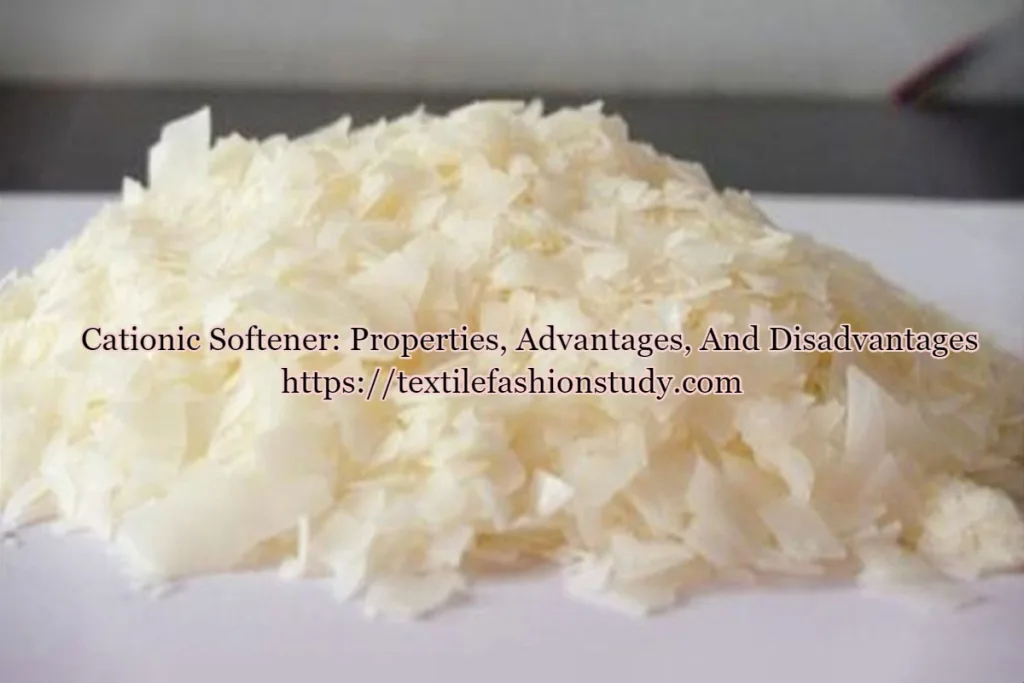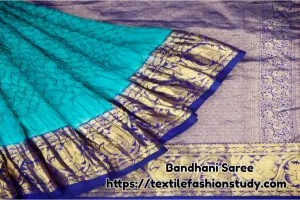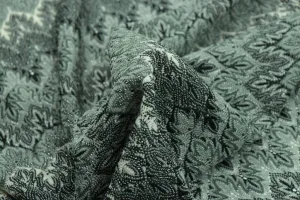Table of Contents
Cationic Softener
Cationic softeners are one of the important softening agents used for the finishing process. It is widely used for softening cellulosic materials.
Properties of Cationic Softener
The properties of cationic softeners are given below. They are-
- Cationic softeners are widely used on cellulose materials.
- It has enough affinity and substantively towards cellulosic fibers.
- Its PH is lies between 5 – 6.
- Cationic agents become unstable to alkaline media.
- It is soluble in water.
- Cationic salts present in hard water react with softener forming precipitation.
- Chemically cationic softener is sap amines, amido amines, imidazoline and quaternary ammonium compounds.

Preparation of Softener Solution
Softener solution is made in the following way.
- At first, take required softener.
- Then, take required amount of water at 700C.
- After that, softener and water is mixed by stirring.
- Finally, acetic acid is added in the solution.
Methods of Cationic Softener Application
Softener is applied to the fabric in the following two ways.
- Pad-dry-calender: In this method, 20 -25 g/l softener are taken where PH level is 4 – 5. Then, fabric is impregnate in to water and the pickup % is 70 – 80. Then fabric is dried at 1200 – 1400C for 2 – 3 minutes.
- Exhaust Methods (Jigger or winch): In this method, following parameters are maintained. It is a sample recipe.
- Americos AC 1000 : 1 – 2% (owf)
- Material: Liquo : 1: 10
- Temperature : 450 – 500 C
- PH: 4 – 5
- Time: 20 – 30 minutes
Advantages and Disadvantages of Cationic Softener
The advantages and disadvantages of cationic softener are given below.
Advantages of Cationic Softener
- Firstly. cationic softener increases lubricity of yarn.
- Secondly, it minimizes the loss in physical property on resin finished goods.
- Thirdly, permanent finish is done by cationic softener.
- Lastly, it can be used as antistatic agent for loose fiber.
Disadvantages of Cationic Softener
- Cationic softener gets precipitated when with anionic compounds.
- Lastly, it is not compatible with other additives.
So, when you will choose a cationic softener, you should remind the properties of cationic softener as well as the advantages and disadvantages of cationic softener.






11 comments
Sohel Sikder
Please ,help for download
HARESH TRIVEDI
WHAT IS DIFFERENCE BETWEEN REACTIVE SOFTNER Vs CATIONIC SOFTNER
Frankie
Is it true that cationic is a form of fiberglass
N shekarabi
Hi dear
I want cationic saftner 2000 please send me amont tanks
Subra....
Kind Attn N Shekarabi
Re : Your requirement of Cationic Fabric Softner 2000 kg. I under stand you want to buy Cationic Fabric Softner. We can supply Cationic Softner any quantity. Please share your end use requirement details and place of delivery with monthly requirenent or Annual requirement to
npanchsubra@gmail. com
Shahin
what is ionic & cat-ionic fabric softner?
Barbara-Ann Fanning
Is it true that there is fiberglass in all but natural dryer sheets.
Frankie
Is it true that cationic is a form of fiberglass
s p hazra
Can we use cationic softener for finishing of pigment printed fabric?
Shakeel
I am from chemical field and doing buissness of chemicals
Brahmananda Barik
Yes, we can use cataionic softner in pigment print fabric.